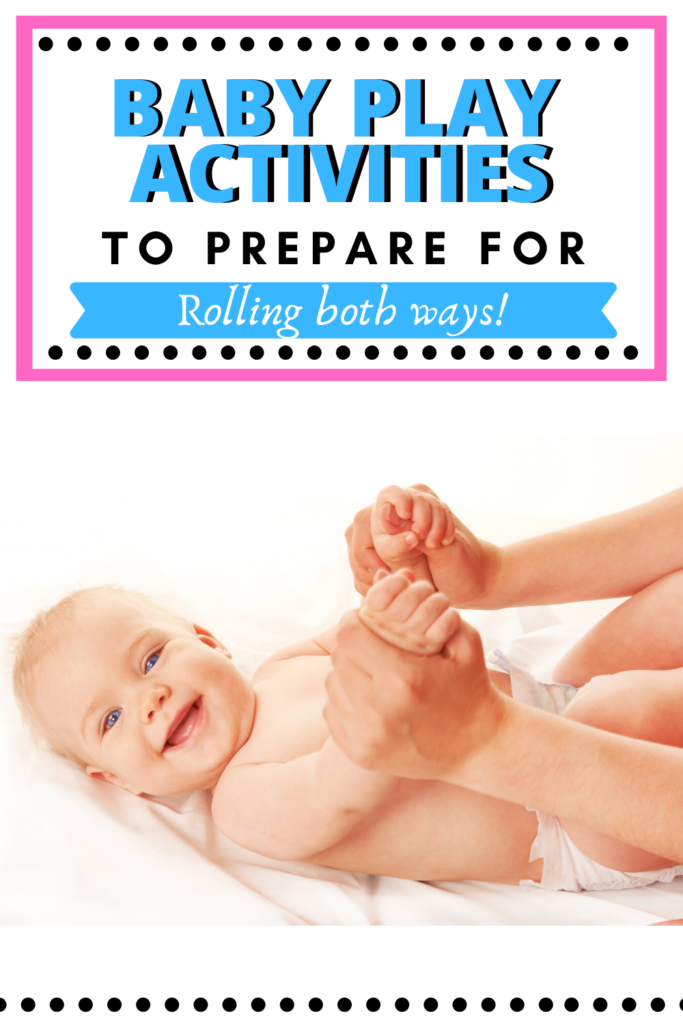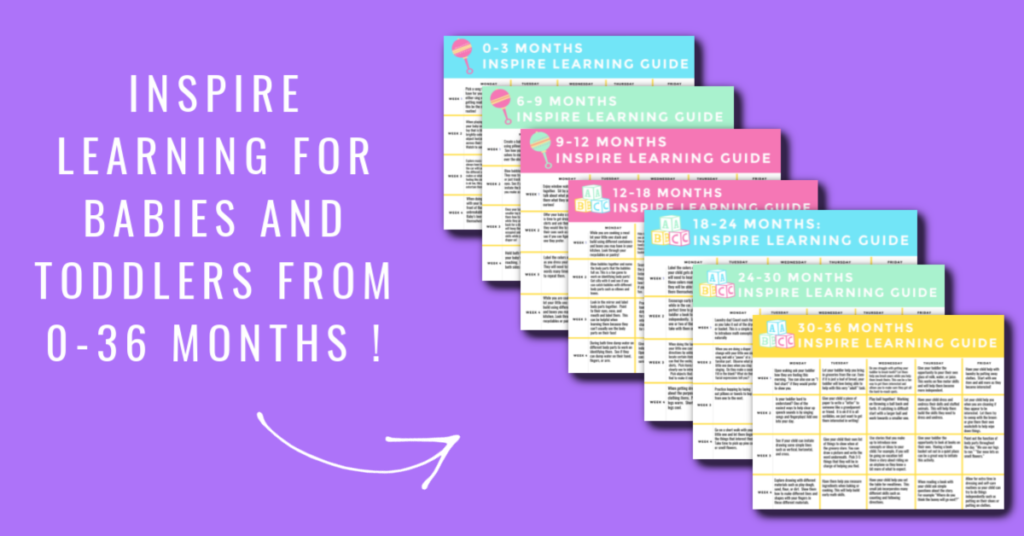Rolling over is an exciting milestone because it is one of the first ways that your baby becomes mobile.
Once they learn to roll they will be able to get from point A to point B all on their own.
Here are some of the topics we will be covering in this post.
- When do babies roll from tummy to back?
- When do babies roll from back to side?
- When do babies roll from back to tummy?
- Baby not rolling…Should I be concerned?
- Baby Activities to Prepare for Rolling Over
- How to Encourage Your Baby to Roll
- Baby Proofing Before Your Baby Starts to Roll
- Frequently Asked Questions about Teaching Baby to Roll

(This post contains affiliate links. To read our full disclosure policy click here.)
When do babies roll over from tummy to back?
Babies usually start to roll from tummy to back sometime between 2-5 months.
When your baby rolls off of their tummy they will need to have the strength to hold up their head and push off of one arm to then flip over.
Rolling to tummy to back usually comes first…but not always.
Every child is different and come may actually roll back to belly first (like my daughter did!)
When do babies roll from back to side
Rolling back to side usually comes bit later then rolling tummy to back.
Your little one may try making this move sometime between 4-6 months.
They will need to have strong core muscles and be able to lift their head up and have their body follow them over to the side.
When do babies roll over from back to tummy?
Babies typically roll back to tummy sometime between 5-8 months.
This skill works the muscles throughout the whole body and requires lots of coordination.
You can encourage them to do this by taking a toy and slowly moving it across their line of vision while they are on their back.
They will try to reach at it and slowly push up on their side which will then lead to them flipping over.
Baby not rolling over at 6 months…Should I be concerned?
If you have concerns about any aspect of your child’s development you should always reach out to your pediatrician or call early intervention for a free screening or evaluation.
It is important to look at development as a whole, not just one milestone.
Baby Activities to Prepare for Rolling Over
There are many ways that you can help your baby get the skills needed to roll over from day one.
Here are a few ways that you can start activating their muscles and providing motivation through play and daily routines.
Let Your Baby Have Lots of Floortime
Letting your baby have lots of time on the floor to play is one of the BEST ways that you can encourage the skills needed to roll.
By moving freely on the floor your baby is allowed to actually feel their body and push off in different directions.
Lay out your child’s favorite toys to provide motivation for them to move.
Unbreakable mirrors (like this) are a great option as they are very motivating to babies.
Limit Time in Baby Seats
You will want to limit the time your baby has in seats or swings.
The reason for this is because it restricts their movements.
Too much time in baby equipment like seats and swings makes it so your baby isn’t able to explore different positions and ways of moving your body.
Click here to read more about the recommendations for using seats and swings with babies.

Make Tummy Time Part of Your Daily Routine
Tummy time helps prepare your baby for rolling because it strengthens the muscles in your baby’s body including arms, abdominal, back, neck and many others.
If your baby does not like tummy time then introduce it in short frequent bursts throughout the day.
Always watch their cues and do not force them if they are not liking it.
Get down on the floor with your baby and engage with them while they are on their tummy by singing to them or reading a book.
Encouraging Your Baby to Roll from Tummy to Back
Encourage your baby to roll tummy to back by first laying them down on their stomachs.
If they will allow you, gently show them the motion of rolling so that they can see what it feels like.
Always pay attention to your baby’s cues, and if they are fighting it then take a break and do something else or allow them to change to a different position.
You can also try taking a toy that they are interested in or find motivating and slowly move it from in front of them to behind them so that they try to push off with their arms to flip themselves over.
Encouraging Your Baby to Roll from Back to Tummy
You can start this process the same way you did when your were teaching your baby to roll from front to back.
Lay them on their back and gently show them how to engage their core and roll from back to front.
You can also take a toy that is motivating to your baby and bring it across their field of vision and leave it just out of reach.
You may need to help your baby get to the toy at first.
Make sure to let them play with the toy that they wanted for a few minutes so that they feel rewarded before having them try again.
Baby Proof Before Your Baby Starts to Roll
Baby proofing before you have your baby is the best idea, because as they meet new milestones this can sometimes mean new safety issues can come up.
NEVER leave your baby unattended on a changing table, bed, or other piece of furniture even if you don’t think they can roll.
Rolling sometimes happens spontaneously and falls can be injure your baby or even be deadly.
Rolling is also a way for your baby to get from point A to point B so it is important to keep any area that your baby plays in safe.
Keep the area picked up and make sure there is nothing your little one could get into that could cause them harm.
Frequently Asked Questions about Teaching Baby to Roll Over
If you are concerned about your baby not being able to roll or lack of movements it is important to talk to your pediatrician or call early intervention.
It is possible but most babies will roll over both directions. How your baby meets their milestones may look different than someone else so it is important to keep in mind that all children will develop at their own rate.
If your baby is not enjoying tummy time try using short frequent bursts throughout the day.
Get down on their level and play and engage with them while they are doing their tummy time.
Recommended Articles
The Best Infant Development Cognitive Activities




